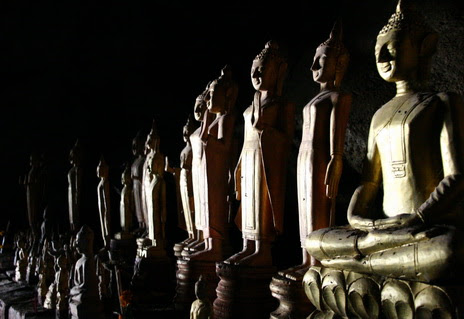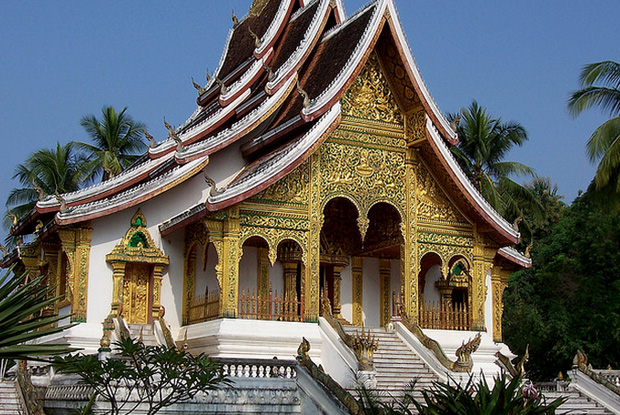



.jpg)
La colline Phou si est l'un des plus élevés dans le centre de la ville de Luang Prabang avec ses 100 mètres. Colline Phou Si, également connu sous le nom de Mont Phousi, est une colline parsemée de temples, des statues bouddhistes et des...
.jpg)
Le Pha That Luang: That Luang, signifiant stûpa suprême est un monument bouddhique situé à Vientiane, capitale du Laos. Monument le plus sacré du pays, il est censé contenir un cheveu de Bouddha. Il figure sur les armoiries du Laos et ses billets de...
.jpg)
Situées à une trentaine de kilomètres de Luang Prabang, les "grandes" cascades sont accessibles via Touktouk (ou minivan) en 45 minutes. La route qui mène à Kuang Si est à proprement parler magnifique. Un camaïeu de vert... Les chutes sont...
.jpg)
Wat SiSaket is a Buddhist wat in Vientiane, Laos. It is situated on Lan Xang Road, on the corner with Setthathirat Road, to the northwest of Haw Phra Kaew, which formerly held the Emerald Buddha. Is the only ancient temple remaining intact after the destruction of the Siamese in 1828. It’s...

Les célèbres Grottes de Pak Ou se trouvent à environ 25 km de Luang Prabang par le bateau, à l'embouchure de la Nam Ou (Pak Ou signifie embouchure de la Ou).Il s'agit de deux grottes creusées au pied de la falaise calcaire, dans lesquelles sont...
.jpg)
The Bolaven Plateau is an elevated region in southern Laos. Most of the plateau is located within Champasak Province of Laos, though the edges of the plateau are also located in Sekong and Attapeu Provinces. It is located between the Annamite Mountain Range, along which runs Laos’ eastern...
.jpg)
Le Parc du Bouddha (ou Xieng Khuan) est un parc situé à 25 kilomètres à l'Ouest de Vientiane, au Laos. Il contient environ 200 statues bouddhistes et hindoues en béton. Le parc a été initié en 1958 par Luang Pu Bunleua Sulilat, un...
.jpg)
Wat Xieng Thong (or Temple of the Golden City) is a Buddhist temple (wat), located on the northern tip of the peninsula of Luang Phrabang, Laos. Wat Xieng Thong is one of the most important of Lao monasteries and remains a significant monument to the spirit of religion, royalty and traditional...

Le Musée national du Laos est situé à Vientiane, la capitale du Laos. Il a été fondé pour mettre en valeur la révolution des années 1970 et est installé dans l'ancienne résidence du gouverneur...

Soyez le premier à connaître nos offres de voyage exclusives et les nouveaux circuits !.